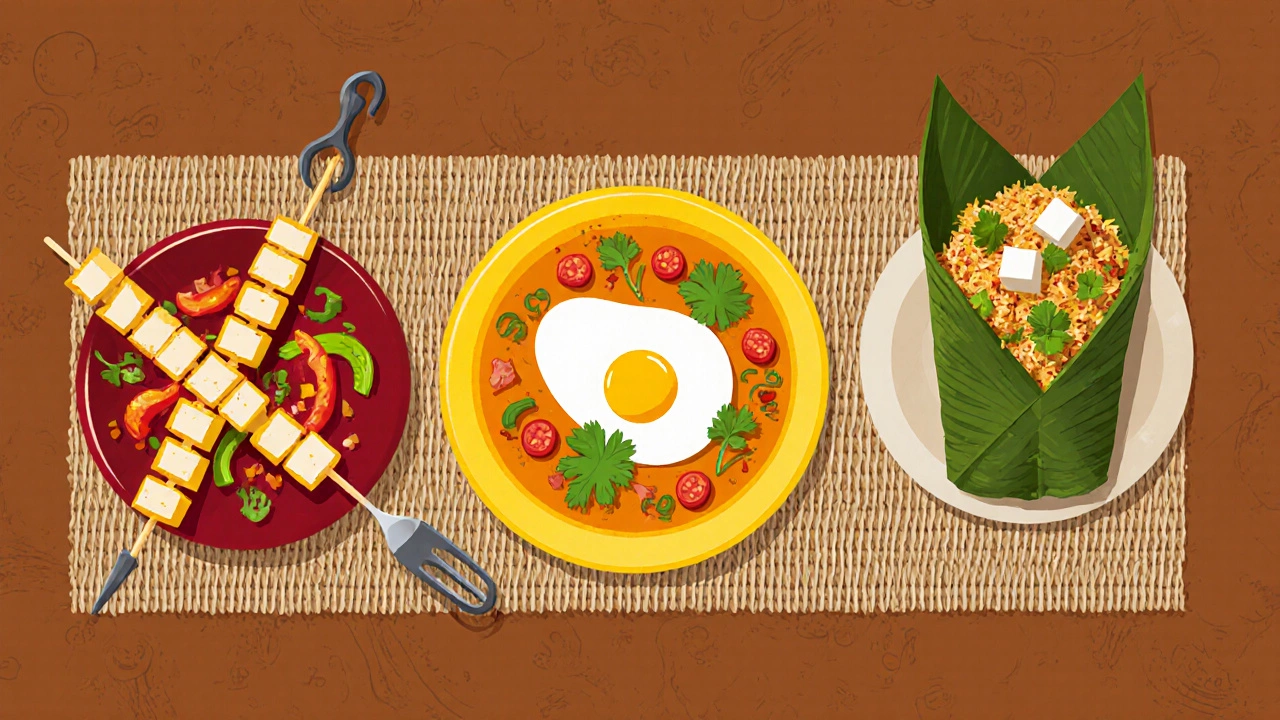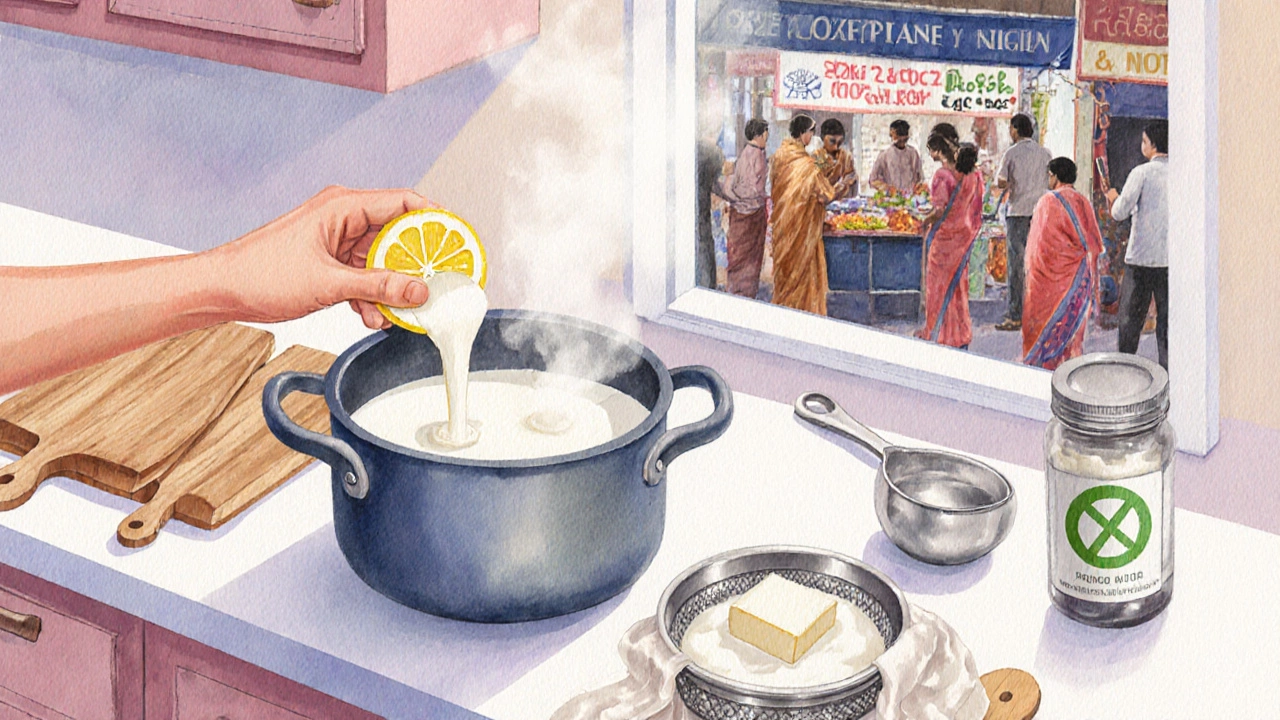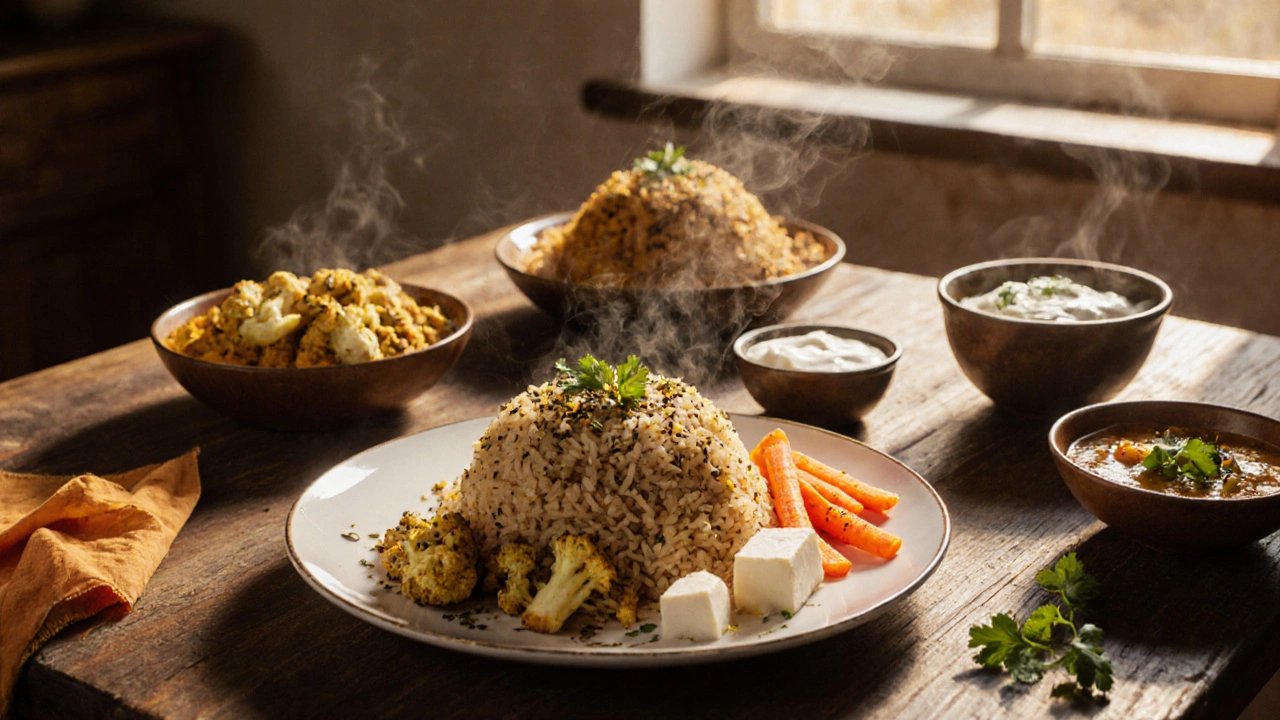When you hear the phrase strict Indian vegetarian, you might picture a plate full of veggies, spices, and maybe a little paneer. But the reality is a bit more nuanced. In India, vegetarianism isn’t a single, uniform practice - it’s a spectrum shaped by religion, regional customs, and personal convictions. This guide breaks down exactly what "strict" means, how it differs from other Indian vegetarian styles, and which foods you can safely enjoy without breaking the rules.
Defining Strict Indian Vegetarianism
Strict Indian vegetarianism, also known as Lacto‑vegetarian a diet that includes dairy but excludes eggs, meat, fish, and all animal-derived gelatin, follows a set of clear boundaries:
- No meat, poultry, or seafood.
- No eggs of any kind - even if they’re used as a binding agent in snacks.
- No animal‑based gelatin (often found in sweets or desserts).
- Dairy products such as milk, yogurt, ghee, and paneer are allowed.
These rules align closely with the dietary codes followed by many Hindus and most Jains, although Jainism can be even stricter (for example, avoiding root vegetables). The key takeaway is that a "strict" label usually means *no animal flesh or eggs*, while still permitting dairy.
How It Differs From Other Indian Vegetarian Styles
India’s vegetarian landscape includes several sub‑categories. Understanding the differences helps you choose the right recipes or menu options when you travel or eat out.
| Diet Type | Eggs | Dairy | Typical Restrictions |
|---|---|---|---|
| Strict (Lacto‑vegetarian) | No | Yes | Meat, fish, poultry, eggs, animal gelatin |
| Egg‑vegetarian | Yes | Yes | Meat, fish, poultry, animal gelatin |
| Vegan (Plant‑based) | No | No | All animal products, including dairy, honey, gelatin |
In practice, many Indian restaurants label dishes as "veg" but still use hidden animal products like egg‑based binders or fish‑based sauces. Knowing these distinctions prevents accidental rule‑breaks.
Core Foods That Fit the Strict Indian Vegetarian Diet
Here’s a quick scan of foods you can count on, grouped by category:
- Grains: rice, wheat (atta, chapati flour), millet (ragi, bajra), quinoa.
- Legumes & Pulses: dal varieties (toor, moong, masoor), chickpeas, kidney beans, black-eyed peas.
- Vegetables: all non‑root veggies are safe - cauliflower, bell peppers, tomatoes, beans, eggplant, leafy greens. Roots like onion, garlic, potatoes are generally allowed unless you follow Jain rules.
- Dairy: milk, yogurt (curd), paneer, ghee, butter, cheese (often Indian varieties like paneer). Choose products that are not emulsified with animal‑derived additives.
- Fruits: mango, banana, papaya, pomegranate, guava, citrus.
- Spices & Condiments: cumin, coriander, turmeric, mustard seeds, asafoetida (hing), tamarind, mango powder (amchur), chutneys made without shrimp paste.
Most Indian street foods can be tweaked to fit. For example, replace the egg in a masala dosa batter with a blend of rice and urad dal, and you stay within strict vegetarian limits.

Common Pitfalls and How to Spot Hidden Non‑Vegetarian Ingredients
Even seasoned travelers can be tripped up by hidden animal products. Look out for these red flags:
- Egg‑based binders: Many samosas, pakoras, and banana‑leaf wraps use a thin egg wash for crispiness. Ask for "no egg" or request a batter made only of rice flour and water.
- Fish‑based flavor enhancers: Products like "fish sauce" (used in some coastal cuisines) or "anchovy paste" in chutneys. Vegan‑friendlier versions use soy sauce or mushroom soy.
- Gelatin in sweets: Some Indian mithais, especially those with a glossy coating, use gelatin derived from pork or beef. Look for "agar‑agar" or "petha" alternatives.
- Butter substitutes: Some packaged snacks list "butter" but mean clarified butter made from animal fat. Verify; ghee is clarified butter from milk and is allowed, but "Butter (milk)" can be tricky in processed foods.
When in doubt, ask the chef or read the ingredient list. Most Indian households are happy to explain and can often swap the offending component.
Regional Variations Within Strict Indian Vegetarianism
India’s culinary map is vast, and even strict vegetarians follow slightly different rules based on where they live.
- North India: Heavy use of dairy - paneer tikka, ghee‑roti, and a wide range of curd‑based drinks. Egg‑free is assumed in most "veg" dishes, but confirm when ordering street snacks.
- South India: Lentil‑rich dishes like sambar, rasam, and dosa batter are naturally egg‑free. However, some coconut‑based chutneys may contain shrimp paste in coastal Kerala - ask for a vegetarian version.
- West India (Gujarat, Maharashtra):** Gujarati thalis often include fried farsan made with gram flour, which is egg‑free. In Maharashtra, "pav bhaji" sometimes uses butter on the buns - it’s okay, but confirm the bhaji itself contains no hidden meat stock.
- East India: Bengali sweets use milk and sugar, but certain sweets like "rasgulla" can be made with whey (paneer) - still fine, but avoid those with gelatin glazing.
Understanding these nuances helps you navigate menus without second‑guessing your diet.

Practical Tips for Cooking Strict Indian Vegetarian Meals at Home
Whether you’re a busy professional in Auckland or prepping for a weekend get‑together, these habits keep your kitchen strict‑vegetarian friendly.
- Separate cooking utensils: Use dedicated cutting boards, ladles, and pans for vegetarian dishes to avoid cross‑contamination from meat preparations.
- Batch‑cook staple dals: Cook a large pot of mixed dal (toor + moong) and freeze portions. It’s a quick base for sambar, dal fry, or soup.
- Make your own paneer: Boil milk, add lemon juice or vinegar, strain, and press. Fresh paneer guarantees no hidden rennet.
- Store-bought sauces: Choose brands that label "vegetarian" and list ingredients clearly. Look for a green triangle (India’s vegetarian certification symbol).
- Spice blends: Roast whole spices at home and grind them. This eliminates the risk of hidden animal additives often found in pre‑made masalas.
Following these steps not only protects your diet but also enhances flavor - homemade spice mixes are fresher and more aromatic.
Frequently Asked Questions
Is a strict Indian vegetarian the same as a vegan?
No. Strict Indian vegetarians eat dairy products like milk, yogurt, ghee, and paneer, while vegans avoid all animal‑derived foods, including dairy and honey.
Can I eat eggs if I follow a strict Indian vegetarian diet?
Eggs are considered non‑vegetarian in the strict Indian context, so they’re off‑limits. Some people follow an "egg‑vegetarian" diet, but that’s a separate category.
Are all "veg" dishes at Indian restaurants safe for strict vegetarians?
Not always. Hidden ingredients like egg wash, fish sauce, or gelatin can appear in sauces, batters, or sweets. Ask the kitchen staff to confirm that a dish is truly egg‑ and gelatin‑free.
What are good snack options for a strict Indian vegetarian?
Try roasted chickpea chaat, corn on the cob tossed with lemon and chaat masala, paneer tikka, or dosas made without egg. Homemade bhel puri with puffed rice, sev, veggies, and tamarind chutney is also safe.
How does Jainism differ from strict Indian vegetarianism?
Jainism adds a ban on root vegetables (like onions, garlic, potatoes) because pulling them up kills the plant. It also avoids honey. Strict Indian vegetarianism generally permits these roots.
Quick Reference Cheat‑Sheet
- Allowed: Dairy (milk, yogurt, paneer, ghee), all fruits, most vegetables, grains, legumes.
- Forbidden: Meat, fish, poultry, eggs, animal gelatin, honey (for vegans).
- Watch for: Egg wash, fish sauce, gelatin in sweets, hidden animal rennet in cheese.
- Ask when ordering: "Is this dish egg‑free and gelatin‑free?"
- Kitchen tip: Keep a dedicated vegetarian spice jar to avoid cross‑contamination.
With these guidelines in hand, you can enjoy the rich tapestry of Indian cuisine without worrying about breaking your strict vegetarian principles. Whether you’re cooking at home in Auckland or ordering from a local Indian eatery, a clear understanding of the rules keeps your meals both delicious and diet‑compliant.
